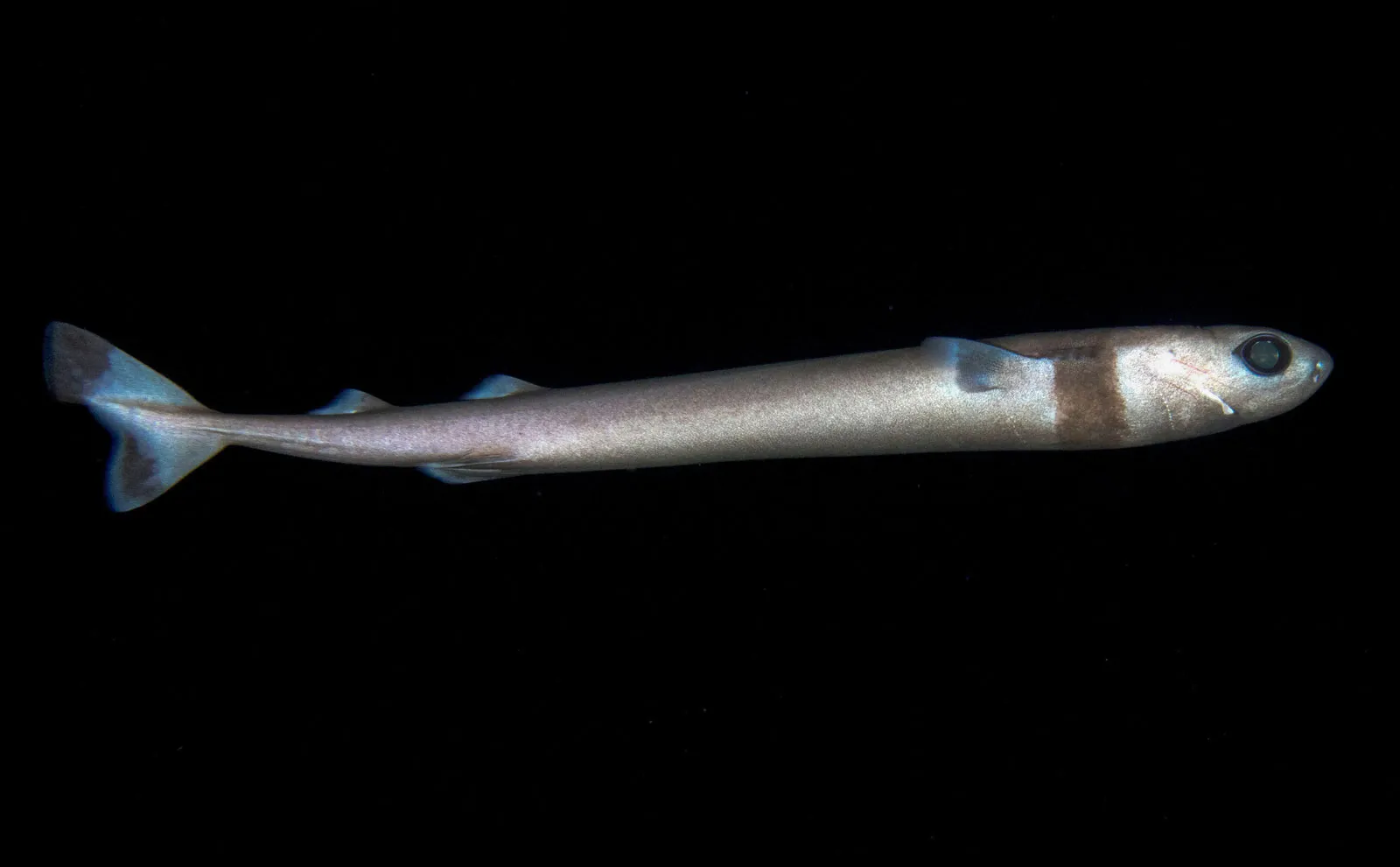Imagine a shark that can bite a chunk of flesh out of a whale, a dolphin, or even a submarine. Sounds scary, right? Well, meet the cookie cutter shark, a small but fierce predator that lives in the dark depths of the ocean. This shark is named after its unique feeding method of gouging round plugs, as if cut out with a cookie cutter, out of larger animals. In this article, we will explore some of the fascinating facts and features of this amazing shark.
Appearance and Adaptations
- The cookie cutter shark is a species of small squaliform shark in the family Dalatiidae.
- It has a long, cylindrical body with a short, blunt snout, large eyes, two tiny spineless dorsal fins, and a large caudal fin.
- It is dark brown, with light-emitting photophores covering its underside except for a dark “collar” around its throat and gill slits.
- The photophores help the shark camouflage itself in the dim light of the deep sea by eliminating its shadow.
- The shark also has a row of sharp, triangular teeth in its upper jaw, and a band of serrated teeth in its lower jaw.
- The lower teeth are used to cut out circular pieces of flesh from its prey.
- The shark can also produce a greenish glow using its photophores, which can attract prey and mimic the silhouette of a small fish.
Habitat and Distribution
- The cookie cutter shark occurs in warm, oceanic waters worldwide, particularly near islands, and has been recorded as deep as 3.7 km (2.3 mi).
- It migrates vertically up to 3 km (1.9 mi) every day, approaching the surface at dusk and descending with the dawn.
- This behavior is known as diel vertical migration, and it allows the shark to find food and avoid predators.
- The shark prefers to hunt in the mesopelagic zone, which is the layer of water between 200 and 1000 meters (656 and 3280 feet) deep, where there is little or no sunlight.
Feeding Habits and Prey
- The cookie cutter shark is a parasitic feeder, meaning that it does not kill its prey, but rather takes a bite and leaves.
- The shark uses its suctorial lips and specialized pharynx to attach itself to the prey and neatly excises a chunk of the flesh using its bandsaw-like set of lower teeth.
- The bite is about 5 cm (2 in) in diameter and 2.5 cm (1 in) deep and leaves a distinctive crater-like wound.
- The shark can also consume whole smaller prey, such as squid.
- The cookie cutter shark has a wide variety of prey, ranging from fish to marine mammals to inanimate objects.
- Some of the animals that have been found with cookie cutter shark bites include tuna, marlin, swordfish, dolphins, whales, seals, sea lions, turtles, and even other sharks.
- The shark is not picky about its food, and will even attack submarines, undersea cables, and human bodies.
Predators and Threats
- The cookie cutter shark is also vulnerable to predation by larger sharks, such as the great white shark, the tiger shark, and the Greenland shark.
- The shark may also face threats from human activities, such as fishing, pollution, and habitat degradation.
- However, the shark is not regarded as endangered, and the International Union for Conservation of Nature has listed it as the least concern.
- The shark has no commercial value and is not particularly susceptible to fisheries.
Latest News and Updates
- The cookie cutter shark is not well-studied, and there is still much to learn about its biology and ecology.
- However, some recent discoveries and events involving this shark are:
| Year | News | Source |
|---|---|---|
| 2023 | Scientists at the Korea Superconducting Tokamak Advanced Research (KSTAR) reported that they found cookie cutter shark bites on the rubber coating of their fusion reactor, which was submerged in the Pacific Ocean for testing. The bites caused damage to the reactor and delayed the experiment. | [Forbes] |
| 2022 | A new species of cookie cutter shark, the largetooth cookiecutter shark (Isistius plutodus), was described based on 10 specimens captured in various parts of the world. This shark has larger teeth and a wider mouth than the more common small tooth cookiecutter shark (Isistius brasiliensis). | [Zootaxa] |
| 2021 | A rare video of a cookie cutter shark attacking a swordfish was captured by a deep-sea camera in the Gulf of Mexico. The video showed how the shark used its bioluminescence to lure and bite the swordfish, which was much larger than itself. | [National Geographic] |
Conclusion
The cookie cutter shark is a remarkable creature that has adapted to survive in the harsh environment of the deep sea. It is one of the smallest and most elusive sharks, but also one of the most voracious and fearless. It is a living example of how nature can be both beautiful and brutal. The next time you see a cookie, remember that there is a shark that can make a similar shape out of flesh.








